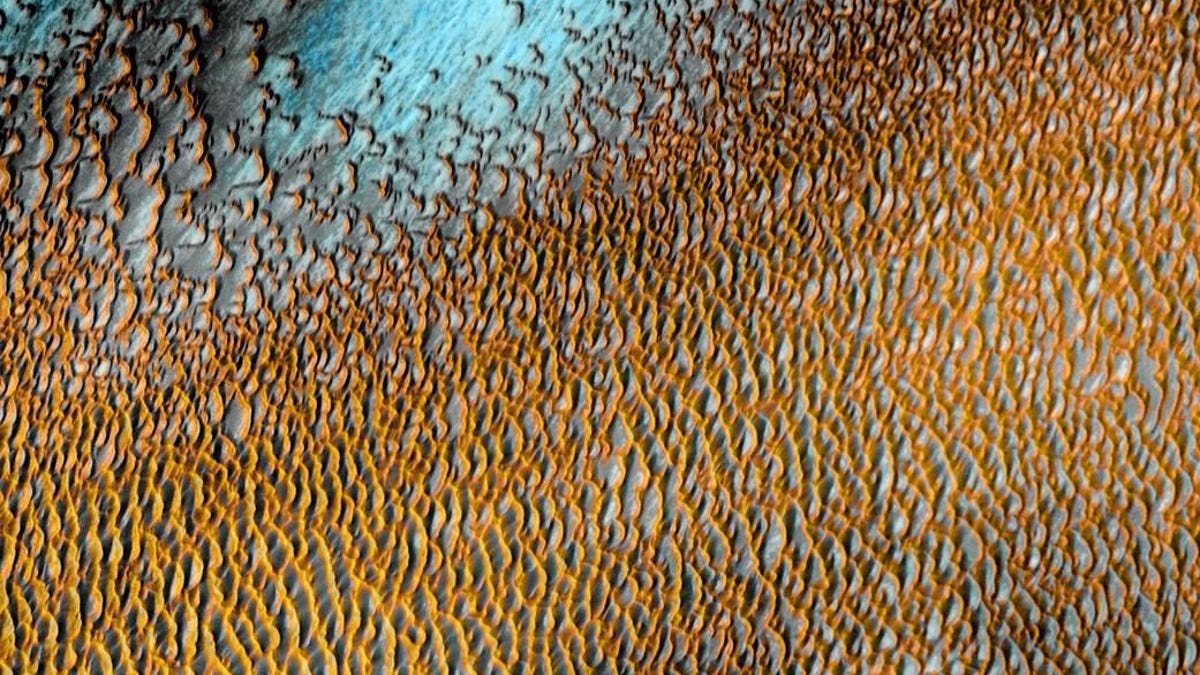Mars has the blues in stunning NASA image of sand dunes on the red planet
NASA celebrates the Mars Odyssey spacecraft's 20 years in space with a striking view of sculpted dunes.

This false-color Mars Odyssey image shows cooler temperatures in blue.
Mars is known as the red planet due to its distinctive rusty color. But the red planet is looking quite blue in a beautiful Mars Odyssey spacecraft image released by NASA that shows a scenic landscape of sand dunes.
The dunes are at the northern polar cap of Mars and the image, released last week, spans an area 19 miles (30 kilometers) wide. The azure and yellow colors pop out of the image, which NASA titled "Blue Dunes on the Red Planet."
It's not that Mars has been holding its breath. The image is blue so scientists can visualize conditions on the Martian surface. "In this false-color image, areas with cooler temperatures are recorded in bluer tints, while warmer features are depicted in yellows and oranges," NASA said in a statement. The golden-colored dunes had been absorbing heat from the sun.
The image is a combination of views Mars Odyssey snapped from 2002 to 2004. NASA released it recently in honor of the spacecraft's 20th anniversary. NASA calls it "the longest-working Mars spacecraft in history."
Mars rovers like Perseverance and Curiosity are certainly glamorous, but orbiting spacecraft like Mars Odyssey have been doing the hard work of imaging, mapping and studying the red planet for years. The orbiter has helped scientists locate water ice on the red planet and recently has been taking a closer look at Mars' moons.
Odyssey got its name from Arthur C. Clarke's 2001: A Space Odyssey. It's an fittingly epic name for a long-lived spacecraft.
Follow CNET's 2021 Space Calendar to stay up to date with all the latest space news this year. You can even add it to your own Google Calendar.

